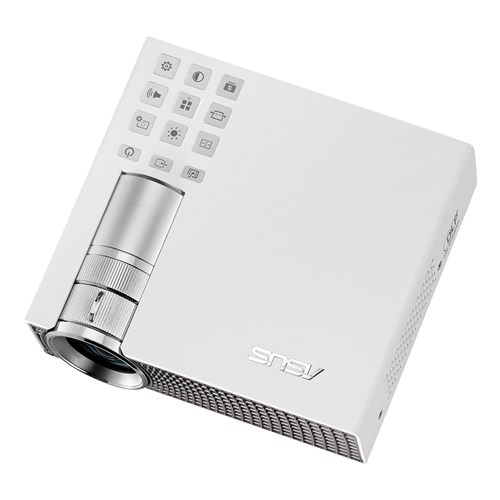Pocket Projectors - They Have Come of Age
Today’s pocket projectors – really not pocket sized, but the term often used for small projectors with solid state (laser, led, or hybrid) light engines, are smaller than lamp based alternatives, but relatively expensive. First of all they are not near as bright, but is that an issue? Most classrooms that were equipped with projectors more than a decade ago, had projectors doing 800 to 1200 lumens. And they did just fine. Today, the typical entry level lamp based projector does 2500 lumens, but that’s typically a lot more than is really needed in most K-12 classrooms.
Today’s brighter pocket projectors produce around 600 – 800+ lumens, definitely adequate in those K-12 classrooms – at least the large majority of them. The advantage though is the light source, which should outlast the useful life of the projector, most are rated 20,000 hours or more. That’s 4 hours a day, 5 days a week ,40 weeks a year, for 25 years. That solves the problem of future budgets being too thin to pay for replacement lamps, but realize you are paying a big premium up front for those light engines.
Where the pocket projectors really shine (pun intended), is when they are needed portably. After all, not every school has enough money to equip most or all of the classrooms with projectors. Still larger lamp based projectors are still very portable, and cost less, so the best “market” for these pocket projectors is when real mobility is called for. That makes them ideal for special projects, for specialty teachers that teach in multiple schools, and for the teacher that due to lack of school financial support, chooses to buy their own projector to take to class, and then take home.
One market unique to pocket projectors is not commonly found in the US, but is in the rest of the world. I’m talking about the ability to run off of battery. In the US, that might be a field trip, but in many 2nd and 3rd world countries, such battery powered projectors can be taken from rural villiage to villiage where electricity is not always guaranteed. We know doctors groups and missionary teachers groups that do good charitable work around the world that rely on battery powered portable pocket and pico projectors. Today though you can buy such a projector that has an internal battery and still put out 250+ lumens. Years ago, those same groups were buying 25 and 50, and more recently 100 lumen projectors, the brightest that could run on batteries. We’ve reviewed a reasonably bright small pocket projector for this report – claiming 300 lumens on battery. That’s still a significant amount of brightness or a 50 inch screen presentation. (For reference, 400 lumens in a dark home theater fills a 100” screen).


